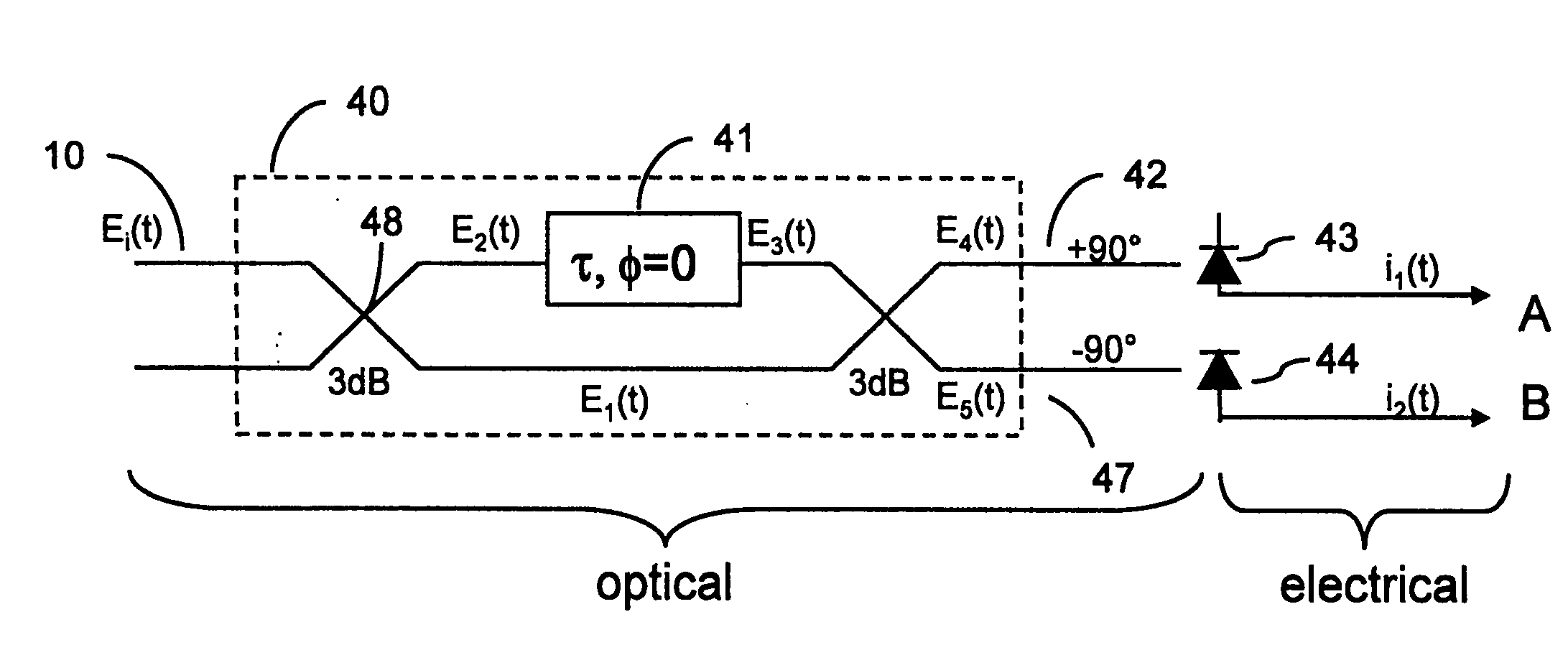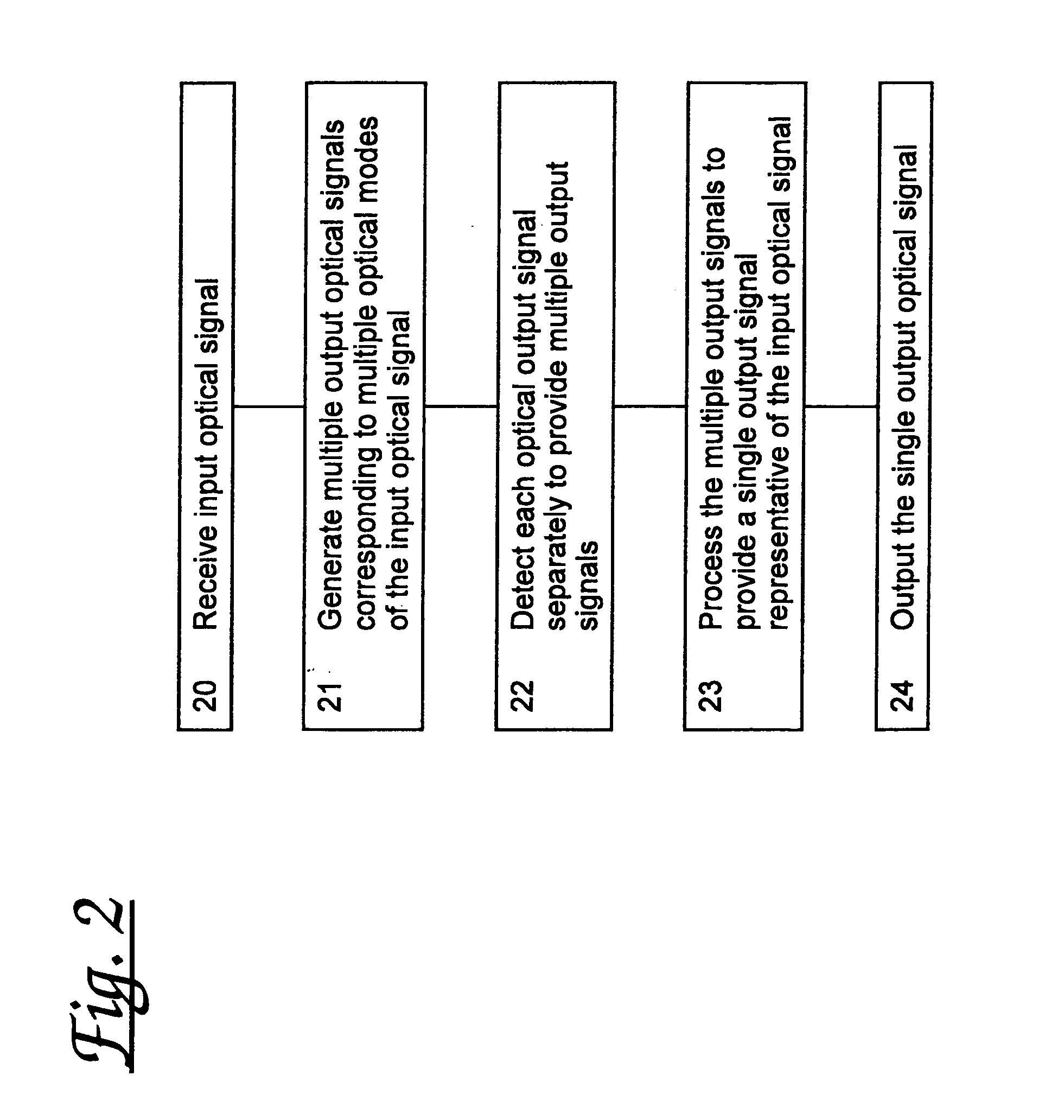Multi-detector detection of optical signals
a detection method and optical signal technology, applied in the direction of optical fiber transmission, dispersion/dispersion elimination, electrical equipment, etc., can solve the problems of imposing practical limits on the length of optical transmission media from which optical signals can be recovered, limiting the effective distance over which optical signals can be transmitted, and exhibiting characteristics of optical fibres
- Summary
- Abstract
- Description
- Claims
- Application Information
AI Technical Summary
Benefits of technology
Problems solved by technology
Method used
Image
Examples
Embodiment Construction
[0049] In conventional direct detection systems utilising only a single photo-detector to detect the received optical signal, high levels of dispersion cannot be compensated electronically after photo-detection since some of the phase information is lost in the photo-detection process. Specifically, because optical dispersion causes a phase shift between upper and lower modulation sidebands of the received signal, the upper and lower modulation sidebands do not sum coherently. As a result, Amplitude Modulation (AM) of the transmitted signal becomes converted to Phase Modulation (PM) of the signal and vice versa.
[0050] The term `detecting` or `photo-detecting` is used herein to refer to the process of converting an optical signal from the optical to the electrical domain.
[0051] Referring now to FIG. 1 there is shown a receiver arrangement according to the invention. The receiver arrangement comprises a mode splitter 11 arranged to receive an input optical signal 10 and to produce mul...
PUM
 Login to View More
Login to View More Abstract
Description
Claims
Application Information
 Login to View More
Login to View More - R&D
- Intellectual Property
- Life Sciences
- Materials
- Tech Scout
- Unparalleled Data Quality
- Higher Quality Content
- 60% Fewer Hallucinations
Browse by: Latest US Patents, China's latest patents, Technical Efficacy Thesaurus, Application Domain, Technology Topic, Popular Technical Reports.
© 2025 PatSnap. All rights reserved.Legal|Privacy policy|Modern Slavery Act Transparency Statement|Sitemap|About US| Contact US: help@patsnap.com



